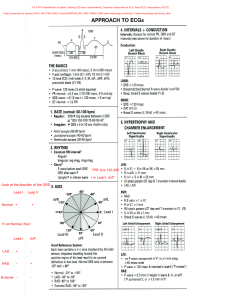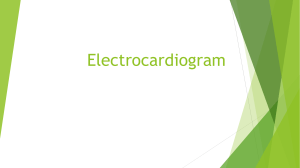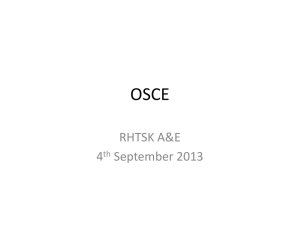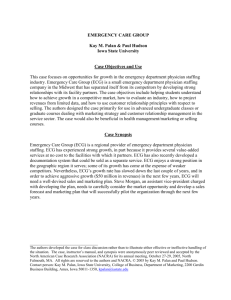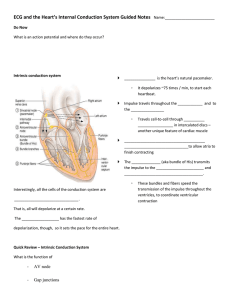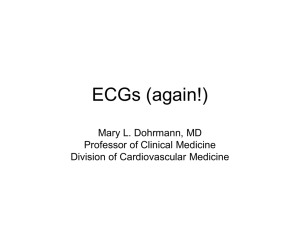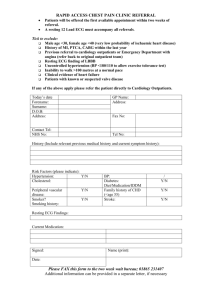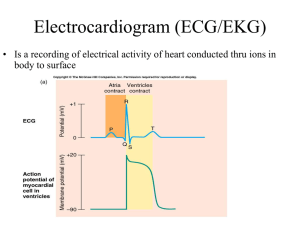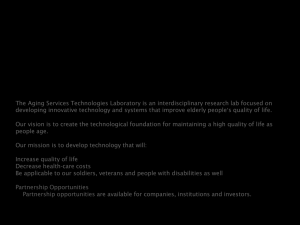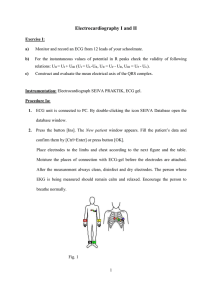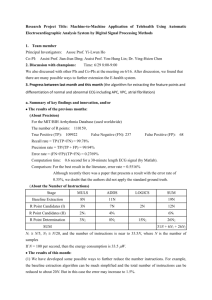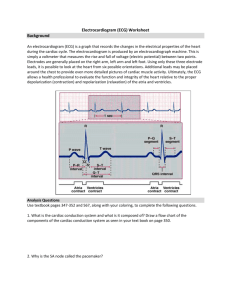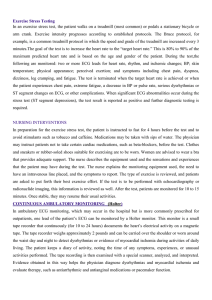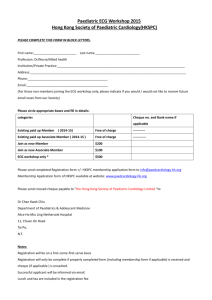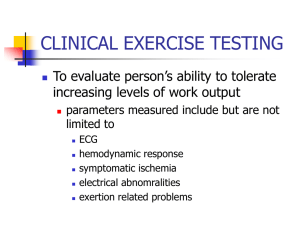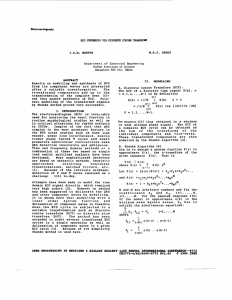Paediatric ECG`s
advertisement
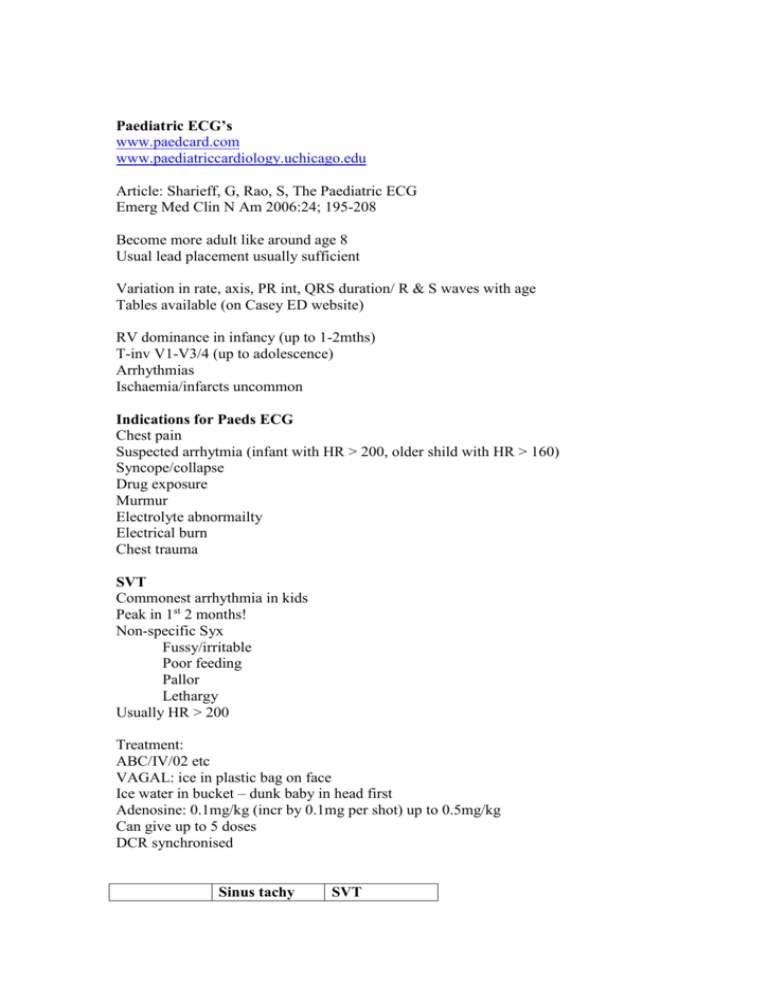
Paediatric ECG’s www.paedcard.com www.paediatriccardiology.uchicago.edu Article: Sharieff, G, Rao, S, The Paediatric ECG Emerg Med Clin N Am 2006:24; 195-208 Become more adult like around age 8 Usual lead placement usually sufficient Variation in rate, axis, PR int, QRS duration/ R & S waves with age Tables available (on Casey ED website) RV dominance in infancy (up to 1-2mths) T-inv V1-V3/4 (up to adolescence) Arrhythmias Ischaemia/infarcts uncommon Indications for Paeds ECG Chest pain Suspected arrhytmia (infant with HR > 200, older shild with HR > 160) Syncope/collapse Drug exposure Murmur Electrolyte abnormailty Electrical burn Chest trauma SVT Commonest arrhythmia in kids Peak in 1st 2 months! Non-specific Syx Fussy/irritable Poor feeding Pallor Lethargy Usually HR > 200 Treatment: ABC/IV/02 etc VAGAL: ice in plastic bag on face Ice water in bucket – dunk baby in head first Adenosine: 0.1mg/kg (incr by 0.1mg per shot) up to 0.5mg/kg Can give up to 5 doses DCR synchronised Sinus tachy SVT Rate Variability P-axis Return to SR Associated < 200 Varies 0-90 degrees Gradual Fever, pain etc > 200 Fixed Upright Abrupt Poor perfusion CONGENITAL HEART DISEASE 1/100 live births Often present in 1st 3 mths ECG: chamber hypertrophy, conduction abnormalities Duct dependent 1st 2 weeks, collapse Coarctation, HLHL (hypoplastic left heart syndrome), Tetralogy L R shunt 1-3 mths CCF, VSD, PDA, AVCD (AV canal defect) Cyanotic Variable ages Cyanosis Tetralogy, Pulmoanry stenosis, Truncus aretriosus Prolonged QT Syndrome QTc = QT/square root of RR QTc > 0.44 = Increased risk of lethal arrhythmia (VF/VT) Syncope/seizure/palps/arrest Usually exercise/emotion Abnormal Na+/K+ channel LONG QT in KIDS Usually congenital Usually triggered by INCREASED HR ie exercise LONG QT in ADULTS Usually torsades triggered by DECREASED HR eg Drugs/AMI Causes: Autosomal recessive (+ deafness) Autosomal dominant (no deafness) Sporadic Low Ca2+ Myocarditis Cardiomyopathy Drugs: TCA, Erythro, Anti-H1, Antifungals Mx Cardiol r/v B-blockers (old treatment) Implanted defib (new treatment) Screen family MYOCARDITIS Coxsackie, Echo, ‘Flu Lethargy, poor feedingm pallor, sweaty, tachypnoea, tachycardia Hepatomegaly = best sign for CCF in kids ECG: sinus tachy, frequent VE’s, Low QRS voltages, flat/inverted T’s
